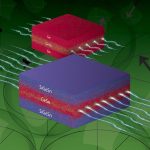Stretchable screens take a big leap forward with new smart materials
Imagine a digital screen that can bend, twist, and stretch like skin—wrapping smoothly around your wrist, fitting onto medical implants, or even covering robots...
Shrink-to-fit electronics could transform wearable tech and smart homes
Imagine drawing a simple circuit on a plastic sheet, heating it up, and watching it shrink into a tiny, perfectly shaped electronic device that...
Too much screen time may slow brain development and worsen ADHD symptoms in children
In today’s world, screens are everywhere. Children use them for learning, talking to friends, and having fun.
Since the COVID-19 pandemic, young people have been...
New “cooling cloth” could replace air conditioning in summer
As heat waves become more intense around the world, scientists are looking for simple ways to help people stay cool without relying on air...
Roblox set to start checking people’s ages. But it will need to do more...
Online gaming giant Roblox has just announced it will start checking users' ages from early December in an attempt to stop children and teenagers...
A bandage-thin device could let your finger feel digital textures in real life
For years, screens have been getting better at showing and playing things that look and sound real.
But when it comes to touch, they are...
Future lighting could replace Wi-Fi and batteries, study finds
Light has always helped us see—but in the future, it may also become a powerful way to send information and power smart devices.
Researchers at...
As AI leader Nvidia posts record results, Warren Buffett’s made a surprise bet on...
The world’s most valuable publicly listed company, US microchip maker Nvidia, has reported record $US57 billion revenue in the third quarter of 2025, beating...
Tiny atomic patterns could supercharge future electronics
Scientists studying ultra-thin semiconductor materials have made a surprising discovery that could change the way we design electronic devices, from lasers to future quantum...
New wearable tech could let you control robots with simple gestures—even while running
Imagine being able to control a robot just by moving your arm, even if you’re running, riding in a car or being bounced around...










